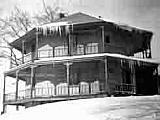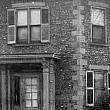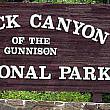
Octagonal Houses
GRHC - July 11th, 2012
Octagonal houses were popular in the 19th century, and Grand Rapids had three over the years. The final two were demolished during Urban Renewal in the 1960s.
Transcript
Known for centuries, octagonal houses became popular in mid-19th century America, especially in Western New York. Grand Rapids, a destination in the New England migration across New York, had at least three eight-sided buildings. One structure on Taylor St. is identified only by a 1911 outline on a Sanborn Insurance map; sometime before that date, the unidentified building was destroyed.
In 1853 Elihu Smith built an impressive two story octagonal house at 9 Hastings Street on the north side of Michigan Street hill. Made of gravel, it featured a cupola and attractive porches on both levels. From almost any vantage point the family could view the entire city of Grand Rapids. The Smith family sold the dwelling in the late 1850’s and settled in Ormond, Florida.
William Peaslee built the first octagonal house in Grand Rapids in 1840 for his brother-in-law, John W. Gunnison. Also two stories, this octagonal cobblestone at 706 Butterworth Street was elegant and spacious. Use of the farm’s lake-washed stones not only improved the land but also provided building material. In 1853, while surveying for the U.S. Army Corps of Topographical Engineers, Captain Gunnison was brutally massacred by Pavante Indians in southwest Utah. Gunnison Avenue, on the west side of Grand Rapids was named for the Captain.
Both octagonal houses served the Grand Rapids community well for over a hundred years, and both were torn down during Urban Renewal in the 1960s.
Full Details
| Title | Octagonal Houses |
|---|---|
| Creator | GRHC |
| Keywords | WYCE; radio; Grand Rapids; Historical Commission; history; octagonal houses |
| Duration | 2:20 |
| Pubdate String | July 11th, 2012 |

 facebook
facebook



